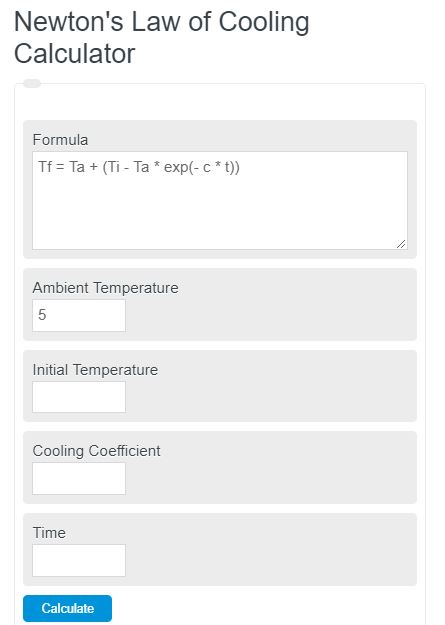Mastering Array Sum with Nested Loops

In the realm of computer programming, the array is a fundamental data structure that serves as a building block for countless applications and algorithms. One common operation on arrays is calculating their sum, which may seem straightforward at first glance. However, when it comes to multidimensional arrays, the task becomes more intricate, often requiring the use of nested loops. In this comprehensive guide, we will delve into the world of array sum calculations using nested loops, exploring various techniques, their applications, and the underlying logic that makes them efficient and versatile.
Understanding Multidimensional Arrays and Their Sum

Multidimensional arrays, as the name suggests, are arrays that have more than one dimension. They are often used to store data that has a natural multi-level structure, such as a matrix or a grid. For instance, consider a simple 2D array representing a chessboard. Each element of the array holds the value of a specific square on the board. To calculate the sum of such an array, we need to traverse each element and perform the summation.
The process of calculating the sum of a multidimensional array can be quite straightforward when using nested loops. Let's explore this concept with a practical example.
Practical Example: Chessboard Array Sum
Imagine we have a 2D array representing a chessboard, where each element stores the value of a square. For simplicity, let’s assume the board is 4x4, and the values are as follows:
chessboard = [
[1, 2, 3, 4],
[5, 6, 7, 8],
[9, 10, 11, 12],
[13, 14, 15, 16]
]
To calculate the sum of this chessboard array, we can employ a nested loop structure. The outer loop iterates through the rows, while the inner loop iterates through the columns of each row. This allows us to access each element of the array and accumulate their values.
sum = 0
for row in chessboard:
for element in row:
sum += element
print("Sum of the chessboard array:", sum)
Running the above code will output 136, which is the sum of all the elements in the chessboard array. This example demonstrates how nested loops can be used to traverse and calculate the sum of a multidimensional array efficiently.
The Logic Behind Nested Loops

Nested loops, as the name implies, involve placing one loop inside another. In the context of array sum calculations, the outer loop typically iterates through the dimensions of the array, while the inner loop iterates through the elements within each dimension. This allows for a systematic traversal of the entire array, ensuring that each element is accounted for in the sum.
The logic behind nested loops can be understood by breaking down the process into steps. For a 2D array, the outer loop iterates through each row, and for each row, the inner loop iterates through each element (column) in that row. This ensures that all elements are visited once and only once. The sum is updated each time an element is encountered, contributing to the final total.
Benefits of Nested Loops
- Versatility: Nested loops can handle arrays of any dimension, making them a powerful tool for calculating sums of multidimensional arrays.
- Efficiency: With proper optimization, nested loops can provide efficient sum calculations, especially for large arrays.
- Clarity: The structure of nested loops often leads to code that is easy to understand and maintain.
Optimizing Nested Loop Array Sum Calculations
While nested loops provide a straightforward approach to calculating array sums, there are several techniques that can optimize the process, especially for large arrays or performance-critical applications.
Early Termination
In certain scenarios, we might be interested in calculating the sum until a specific condition is met. For instance, if we are dealing with an array of positive integers, we might want to calculate the sum until we encounter a negative number. In such cases, we can use early termination techniques to stop the loop once the desired condition is satisfied.
sum = 0
for element in array:
if element < 0:
break
sum += element
print("Sum until negative number:", sum)
Loop Unrolling
Loop unrolling is a technique where we expand the loop to process multiple elements at once, reducing the number of loop iterations. This can lead to better cache performance and improved instruction pipeline efficiency. For array sum calculations, loop unrolling can be particularly effective when dealing with large arrays.
sum = 0
for i in range(0, len(array), 2):
sum += array[i] + array[i + 1]
print("Sum using loop unrolling:", sum)
Vectorization
Vectorization is a powerful technique that leverages the capabilities of modern processors to perform operations on entire arrays or vectors in a single instruction. Languages like Python offer vectorization capabilities through libraries like NumPy, which can significantly speed up array sum calculations.
import numpy as np
array = np.array([1, 2, 3, 4, 5, 6, 7, 8, 9, 10])
sum = np.sum(array)
print("Sum using NumPy:", sum)
Real-World Applications of Nested Loop Array Sums
The ability to calculate the sum of arrays, especially multidimensional ones, has numerous real-world applications across various domains. Let’s explore some of these applications.
Image Processing
In image processing, pixels are often represented as multidimensional arrays. Calculating the sum of pixel values within specific regions or across the entire image can be crucial for various tasks, such as image segmentation, feature extraction, or edge detection.
Financial Analysis
Financial analysts often work with multidimensional arrays of financial data. Calculating the sum of specific columns or rows can provide insights into market trends, portfolio performance, or risk assessments.
Scientific Computing
Scientific research frequently involves working with large datasets that are represented as multidimensional arrays. Calculating the sum of specific elements or dimensions can be vital for tasks like data normalization, statistical analysis, or model training.
Future Implications and Advanced Techniques

As computing power continues to advance, so do the techniques for optimizing array sum calculations. Here are a few areas of future exploration and potential advancements:
Parallel Processing
Utilizing multiple processors or cores to calculate array sums in parallel can significantly speed up the process. This is especially beneficial for large arrays or time-sensitive applications.
GPU Acceleration
Graphics Processing Units (GPUs) are highly parallel processors that can perform thousands of calculations simultaneously. Leveraging GPU acceleration for array sum calculations can lead to remarkable speedups, especially for large datasets.
Advanced Data Structures
Exploring advanced data structures, such as sparse matrices or compressed arrays, can lead to more efficient sum calculations for specific types of arrays.
| Technique | Description |
|---|---|
| Nested Loops | A traditional method for calculating array sums, offering versatility and ease of understanding. |
| Early Termination | Allows for efficient sum calculations by stopping the loop once a specific condition is met. |
| Loop Unrolling | Expands the loop to process multiple elements at once, improving cache performance and instruction efficiency. |
| Vectorization | Leverages the power of libraries like NumPy to perform array operations with a single instruction. |

Conclusion
In this comprehensive guide, we have explored the concept of array sum calculations using nested loops. We delved into the logic behind nested loops, their benefits, and various optimization techniques. Additionally, we highlighted real-world applications of these calculations and provided a glimpse into future advancements. As computing technology continues to evolve, the efficient handling of multidimensional arrays and their sums will remain a fundamental aspect of programming and data processing.
How do nested loops improve the efficiency of array sum calculations?
+
Nested loops provide a systematic approach to traversing multidimensional arrays, ensuring that each element is accounted for in the sum. This structured traversal leads to efficient and accurate sum calculations, especially for large arrays.
Can nested loops be used for arrays of any dimension?
+
Yes, nested loops can handle arrays of any dimension. By nesting loops accordingly, you can iterate through each element of the array, regardless of its dimensionality.
What are some common applications of nested loop array sums in real-world scenarios?
+
Nested loop array sums find applications in various fields, including image processing, financial analysis, and scientific computing. They are used for tasks like data normalization, feature extraction, market trend analysis, and more.
Are there any alternative methods to calculate array sums other than nested loops?
+
Yes, there are alternative methods such as early termination, loop unrolling, and vectorization. Each method has its advantages and is suitable for different scenarios and performance requirements.



